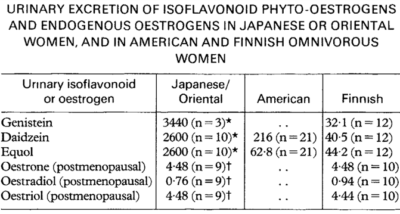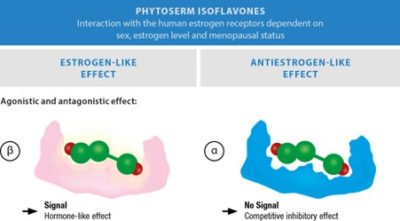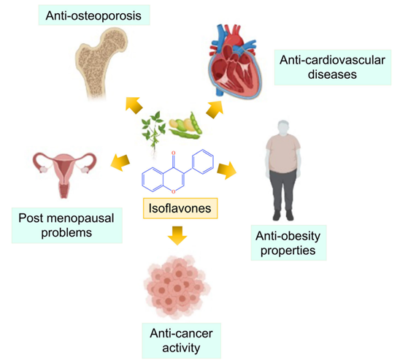In our prior newsletter, we explored the relationship between menopause and cancer therapies, outlining strategies to manage menopausal symptoms that arise naturally or due to therapy. This second edition focuses on the untapped potential of plant extracts for menopause symptom relief. With an estimated 1.2 billion women expected to be menopausal by 2030, addressing symptom management is a growing public health concern. Menopausal symptoms like hot flashes, mood swings, and fatigue can drastically diminish one’s quality of life, making effective, accessible treatments more essential than ever.
Plant Extracts for Menopause: A Background
The potential of plant extracts for relieving menopausal symptoms was first recognised when researchers observed that women consuming soy-rich diets reported fewer menopausal complaints. For example, a 1992 study found that Japanese women had 100 to 1000 times higher levels of phytoestrogens (i.e., plant compounds resembling natural oestrogen) compared to their American and Finnish counterparts (Figure 1). This difference was traced to their soy-heavy diet, which includes staples like tofu, miso and soybeans. Researchers suspect these elevated phytoestrogens are why Japanese women experience fewer menopausal symptoms.
These early observations prompted deeper investigations into the ability of certain plant extracts to alleviate menopausal symptoms. Interest in these therapeutic plant extracts also surged in the 1990s, particularly as hormone replacement therapy (HRT) came under increased scrutiny due to its potential side effects and contraindications, rendering it unsuitable for many women (as discussed in our previous newsletter). For example, HRT is contraindicated for women with hormone-sensitive cancers, such as breast, ovarian, and uterine cancers – ironically, the same group that is often affected by therapy-induced menopause.
This newsletter will explore the promising role of certain plant extracts in managing menopausal symptoms. We will delve into the clinical and mechanistic evidence that highlights their therapeutic properties, not only in relieving menopause-related discomfort but also in addressing other oestrogen-related conditions that impact women’s health.
Figure 1. Urinary levels of phytoestrogens and endogenous oestrogens in Japanese, American and Finnish women. A 100-1000-fold increase in phytoestrogen levels (genistein, daidzein and equol) was observed in Japanese women. Source: Adlercreutz et al. (1992), The Lancet.
Plant Extracts for Menopause: Clinical Evidence
Meta-analyses are considered the highest form of clinical evidence, especially when evaluating the effectiveness of therapies. By pooling data from multiple independent studies, often randomised controlled trials (RCTs), meta-analyses perform statistical analyses that lead to more robust conclusions. This method increases the collective sample size and statistical power, offering more reliable and generalisable results than individual studies or RCTs.
In a 2024 meta-analysis published in Phytotherapy Research, scientists investigated the effectiveness of plant extracts in treating menopausal symptoms. The study synthesised data from 61 RCTs across multiple countries, with 76% of the RCTs deemed high quality to draw reliable conclusions. The results showed positive effects of plant extracts across four questionnaires designed to assess the frequency and severity of common menopausal symptoms. Compared to placebo, participants supplemented with plant extracts reported:
- 6 times lower frequency of hot flashes (n = 24 RCTs).
- 8 points lower on the Kupperman’s Index (n = 18 RCTs).
- 1 points lower on the Greene Climacteric Scale (n = 13 RCTs).
- 6 points lower on the Menopause Rating Scale (n = 10 RCTs).
Notably, this meta-analysis differentiated between two types of plant extracts: phytoestrogens and other herbal products. While both categories demonstrated statistically significant improvements in menopausal symptoms, phytoestrogens proved to be more effective. Previous meta-analyses have similarly found a net positive effect of plant extracts, particularly phytoestrogens, in alleviating menopausal symptoms. Based on individual RCTs included in the meta-analyses, plant extracts that improved at least one menopausal symptom involved:
- Phytoestrogens: soy protein, soybean, red clover, genistein, flaxseed,
- Other herbal extracts: black cohosh, ginkgo leaf, pollen, hop flowers, maca, red ginseng, ginseng, anise, pomegranate seed oil, evening primrose oil, fennel oil, liquorice, fenugreek, Schisandra, St John’s wort, Valerian root, Ashwagandha root, lemon balm, milk thistle, pomegranate and resveratrol.
The ability of phytoestrogens to relieve menopausal symptoms is rooted in their capacity to mimic or modulate hormonal activities. Phytoestrogens have a similar chemical structure to natural oestrogen, allowing them to bind to oestrogen receptors in the body. Additionally, many plant extracts possess antioxidant and anti-inflammatory properties, further contributing to their therapeutic properties.
The three most common types of phytoestrogens are:
- Isoflavones: Found in red clover and soy products (tofu, soy milk, etc.).
- Lignans: Found in flaxseed, sesame seeds and wholegrains (rye, barley, etc.).
- Coumestans: Found in alfalfa, clover sprouts and split peas.
Although their metabolism and mechanisms differ slightly, these phytoestrogens function as selective oestrogen receptor modulators (SERMs). They can either enhance oestrogenic activity by activating oestrogen receptors, particularly in low-oestrogen environments, or inhibit it by competing with natural oestrogen for the same receptors, thus reducing excess oestrogenic stimulation. This dual role allows phytoestrogens to adapt to the body’s hormonal conditions, making them versatile in managing oestrogen-related conditions (Figure 2).
Figure 2. The dual role of phytoestrogens in mimicking or modulating oestrogenic activities, depending on the body’s hormonal conditions. Source: Institute for Cell-Oriented Therapy in Gynaecology (2024).
Upon ingestion, isoflavones are metabolised by gut bacteria into active compounds, namely genistein, daidzein and equol. These compounds closely resemble the structure of oestrogen, allowing them to bind to oestrogen receptors. This binding promotes oestrogenic activities and helps alleviate menopausal symptoms, although the extent of relief depends on individual gut microbiota composition. Adequate intake of isoflavones, particularly from soy products, has also been shown to support metabolic health by influencing liver enzymes to reduce the production of low-density lipoprotein (LDL) cholesterol and triglycerides.
Similarly, lignans are metabolised by gut bacteria into enterolignans (i.e., enterodiol and enterolactone), which exhibit weak oestrogenic effects. These compounds can also influence sex hormone metabolism by stimulating the production of sex hormone-binding globulin (SHBG), which reduces the availability of circulating oestrogen. Regular consumption of lignan has been associated with protective effects against oestrogen-related conditions beyond menopausal symptoms, including breast cancer, osteoporosis and cognitive decline.
Although coumestans are consumed less frequently than other phytoestrogens, research indicates that they have a greater binding affinity for oestrogen receptors compared to isoflavones and lignans. However, despite their biochemical potential, coumestans are present in trace amounts in most foods. Nevertheless, when consumed in adequate concentrations, coumestans have demonstrated protective oestrogenic benefits, such as alleviating menopausal symptoms, preserving bone health and reducing the risks of oestrogen-related diseases.
Besides phytoestrogens, other herbal extracts can also mitigate menopausal symptoms through different mechanisms. For example, black cohosh interacts with serotonin receptors to reduce hot flashes and night sweats by regulating body temperature, while ginseng improves overall well-being by acting as an adaptogen to support the body’s stress response. Evening primrose oil, rich in anti-inflammatory gamma-linolenic acid, may help relieve breast tenderness, mood swings and skin dryness. Additionally, Valerian root and St. John’s wort are commonly used to address insomnia and mood disturbances by modulating neurotransmitter activities in the brain, thus promoting relaxation and emotional balance.
Plant Extracts for Women’s Health
As research expands into the therapeutic effects of plant extracts for menopause symptom relief, we are beginning to see broader applications of these natural compounds in supporting women’s health. Epidemiological and clinical evidence shows that phytoestrogens could reduce the risks of osteoporosis, metabolic diseases and hormone-related cancers (Figure 3). Indeed, Asian women who consume phytoestrogen-rich diets experience a lower prevalence of breast and uterine cancers and cardiovascular diseases, as well as improved bone mass, compared to women in other regions.
Phytoestrogens have also demonstrated a favourable long-term safety profile in managing menopausal symptoms. The most common side effects of phytoestrogens are mild gastrointestinal discomfort, such as bloating and constipation, which are likely due to the high fibre content of phytoestrogen-rich foods. Importantly, unlike pharmaceutical selective oestrogen receptor modulators (SERMs; e.g., tamoxifen) or hormone replacement therapy (HRT), phytoestrogens do not increase the risk of uterine cancer or thromboembolic events (blood clots), positioning phytoestrogens as a relatively low-risk therapeutic option.
In conclusion, incorporating plant extracts like phytoestrogens into mainstream healthcare could provide more holistic approaches to women’s health, addressing not only menopausal symptoms but also reducing the risk of chronic diseases that affect women as they age.
Figure 3. Health benefits associated with phytoestrogens like isoflavones. Source: Rani and Vimolmangkang (2022), Phytochemistry Reviews.






